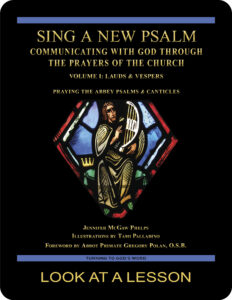right & left
 At one point during Jesus’ ministry, the mother of James and John makes a power play, asking Jesus to allow her two sons to sit at Jesus’ right and left when his kingdom comes. You can read an account of this in the Gospel According to Matthew 20:20–28 (NABRE). In the Greek language, the contexts of right and left had superstitious connotations that they no longer carry today.
At one point during Jesus’ ministry, the mother of James and John makes a power play, asking Jesus to allow her two sons to sit at Jesus’ right and left when his kingdom comes. You can read an account of this in the Gospel According to Matthew 20:20–28 (NABRE). In the Greek language, the contexts of right and left had superstitious connotations that they no longer carry today.
The Greek adjective meaning “at the right” is δεξιός (dexios), and it shares the same root as the English word dexterity. In ancient thought, the right was regarded as good, capable, and superior. Ancient Greek has two words for left, both euphemisms. In the above passage, the Greek word used is εὐώνυμος (euonumos), which means “of good name” or “favored.” The other and more common Greek word for left was ἀριστερός (aristeros), which literally meant “best.” The Greeks associated bad luck or misfortune with the left to the extent that when they talked about it, they over-compensated toward saying good things. Latin shows a less euphemistic view of the left with its word for sinister, which means left.
While Old Testament thought view left-handedness as an indicator of weakness and inferiority, the ancient Hebrews did not have the same overall bias against the entire concept of left as did the Greeks. This distinction between Hebrew and Greek thought about right and left is important to interpreting the request about James and John found in this passage from the Gospel According to Matthew. Though the Gospel comes to us in Greek, we see a Hebrew concept being expressed. The Greeks never would have viewed sitting at someone’s left as a good thing, and they never would have discussed any place of honor in terms of the left.
related topic: righteousness
you also may like Volume I of our Psalms study
 Sing a New Psalm: Communicating with God Through the Prayers of the Church—Volume I: Lauds & Vespers provides an in-depth look at Psalms prayed in morning and evening liturgies. (Volume II, set for publication in 2024, looks at Vigils, Day Prayer & Compline.) The study is based on The Abbey Psalms and Canticles, a translation prepared by the Benedictine monks of Conception Abbey and published by the United States Conference of Catholic Bishops (USCCB). Click on the book’s cover to view a sample lesson.
Sing a New Psalm: Communicating with God Through the Prayers of the Church—Volume I: Lauds & Vespers provides an in-depth look at Psalms prayed in morning and evening liturgies. (Volume II, set for publication in 2024, looks at Vigils, Day Prayer & Compline.) The study is based on The Abbey Psalms and Canticles, a translation prepared by the Benedictine monks of Conception Abbey and published by the United States Conference of Catholic Bishops (USCCB). Click on the book’s cover to view a sample lesson.
 Click on the picture of the statue of Moses with horns (above) to learn more about Lost in Translation. A new entry is archived each Monday. Contact us to receive Lost in Translation by email every week. You may use any of the contact links on our website to ask Matthew a question.
Click on the picture of the statue of Moses with horns (above) to learn more about Lost in Translation. A new entry is archived each Monday. Contact us to receive Lost in Translation by email every week. You may use any of the contact links on our website to ask Matthew a question.

Leave a Reply
You must be logged in to post a comment.